Teaching your kids to be grateful is a precious gift. Studies show that 78% of parents think it’s key for their kids’ growth and happiness1. But how do you teach them to be thankful? We’ve got 10 cool ways to make your family a place of gratitude.
Start by being a good example. Research says 65% of kids will be more thankful if they see their parents being grateful1. When your kids see you thankful for small things, they learn to be thankful too.
Key Takeaways:
- Teaching gratitude is essential for children’s social and emotional development.
- Modeling grateful behavior is crucial for children to learn and practice thankfulness.
- Engaging in gratitude activities, such as keeping a family gratitude journal, can foster a sense of appreciation.
- Encouraging children to express gratitude through various means, like drawing pictures or doing chores, can be more effective than just verbal expressions.
- Incorporating discussions about privilege and compassion can help children develop a deeper understanding of gratitude.
The Importance of Teaching Gratitude

Teaching kids to be thankful is key for their growth. Gratitude helps them feel present, appreciate cultures, and boosts their. It also helps them sleep better and feel less stressed2. By teaching gratitude, we prepare them for a life filled with appreciation and kindness.
Benefits of a Gratitude Practice
Gratitude is vital in education2. Over 15 years, studies show it makes people happier, builds stronger relationships, and improves health2. It also makes kids feel more positive about school2. The Greater Good Science Center is working to bring these findings into classrooms2.
Research shows gratitude in class has many benefits3. Keeping a gratitude journal can lead to better grades and more satisfaction in life3. Adults who do the same feel more optimistic and sleep better3.
The Gratitude Challenge aims to reduce stress and improve well-being2. Dr. Giacomo Bono has created a “Gratitude Curriculum” for kids2. The Greater Good Science Center will work with teachers to teach gratitude in class2.
In short, teaching gratitude is crucial for kids’ growth. It improves their school performance, relationships, and health. By teaching gratitude, we help them live a life filled with appreciation and kindness.
Modeling Gratitude Behavior
As parents, we have a chance to teach our kids about gratitude. By showing gratitude ourselves, we can teach them this important trait4. It’s key to show them what it means to be thankful4.
Real gratitude takes thought and effort, not just saying “thank you.”4 It affects both the person giving and the one receiving, showing how important it is to teach kids to be thankful4.
4 We can teach kids about thankfulness by using our words and actions every day4. Talking about gifts and having them write or draw thanks helps a lot4. Helping out in charity work and talking about helping others also teaches them to be thankful and generous4.
4 Reading stories about kindness and generosity can also teach them the value of gratitude4. Giving old things to those in need teaches them to appreciate what they have4. Seeing and thanking others for their kindness helps them understand the value of gratitude and compassion4.
4 Making gratitude a daily habit, like at dinner or bedtime, is a great way to teach them4. Starting early with these lessons is very important for their growth4.
4 Traits like gratitude and compassion are key for a child’s growth and development4. They help kids become more caring and less self-centered4. For more on parenting and child development, check out the MSU Extension website.
| Modeling Gratitude Behavior | Benefits |
|---|---|
|
|
By always showing gratitude, we can teach our kids to be thankful for life’s blessings4. This not only helps them but also makes our world a kinder place.
Teaching Gratitude
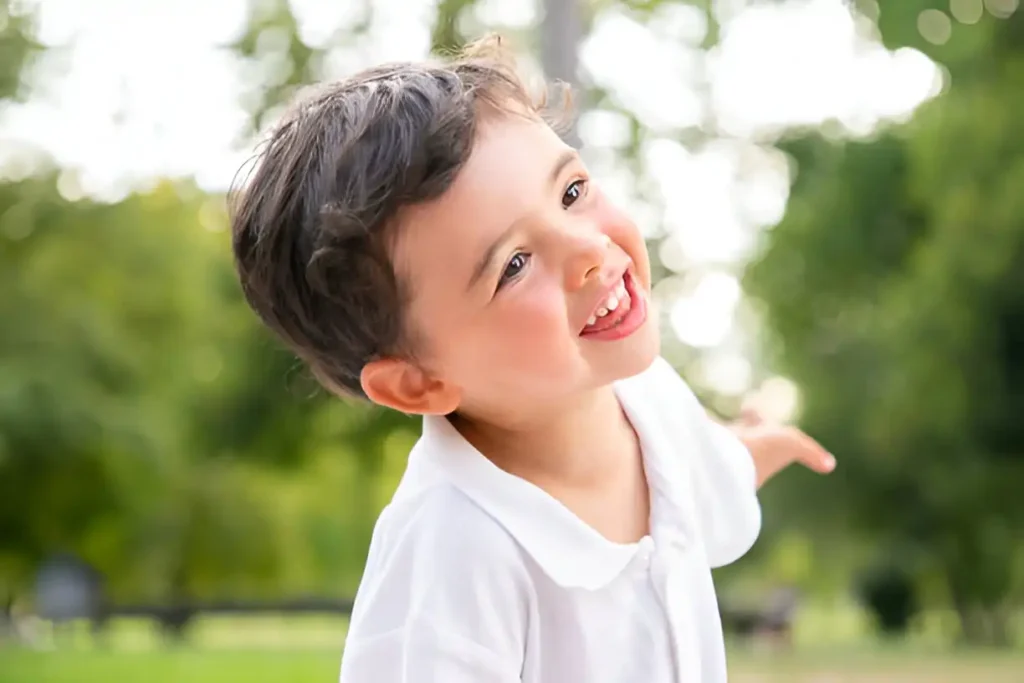
Discuss Emotions around Gratitude
Teaching kids to be thankful involves understanding the feelings behind it. Ask your child how they feel when someone thanks them5. Talk about how their thanks can make others happy. This helps them see the value of being grateful5.
Young kids start to feel gratitude in simple ways5. As they get older, they can understand more about gratitude. They learn to notice, think about, feel, and share their thanks5.
Getting kids to say thank you can take time, especially for the little ones5. But, with patience, we can teach them to be thankful. Using books like Thankful by Eileen Spinelli makes it fun6.
I’ve worked with kids for over 15 years and seen gratitude’s positive effects6. My books help kids follow the four steps of gratitude in a fun way5. Teaching them to express thanks helps them feel grateful for life5.
Most parents want to teach gratitude, but it’s hard to keep it up7. By talking about gratitude’s feelings and using the right books, we can teach kids this important skill5. With patience, they can learn to appreciate and share their thanks in meaningful ways5.
Creative Ways to Express Gratitude
Teaching kids to express gratitude is key. It’s more than just saying “thank you there are many ways for kids to show thanks and grow a thankful mindset8.
Encourage your kids to be creative with their thanks. They can make heartfelt cards, draw for those who helped them, or give small gifts8. These activities help kids feel empathy, build confidence, and make stronger bonds9.
- Gratitude journals or collages let kids visually show what they’re thankful for.
- Putting on a gratitude-themed show, like a play, is a fun way for kids to share thanks.
- Doing arts and crafts, like making friendship bracelets or gratitude trees, inspires kids to share their thanks.
Being flexible and letting kids choose how they want to show gratitude is important8. Offer different options and let them pick what they like best8. This way, you help them develop a lasting habit of gratitude and appreciation9.
Remember, the act of showing gratitude is valuable, no matter how you do it8. Encourage your kids to show extra effort in their thanks. Acknowledge the thought, effort, and value behind the kindness they’ve received8. This makes their thanks even more meaningful8.
By teaching creative gratitude, you help your kids feel more thankful, empathetic, and happy9. Adding gratitude to your family’s life makes a positive and supportive space for everyone8.
Giving Back and Volunteering
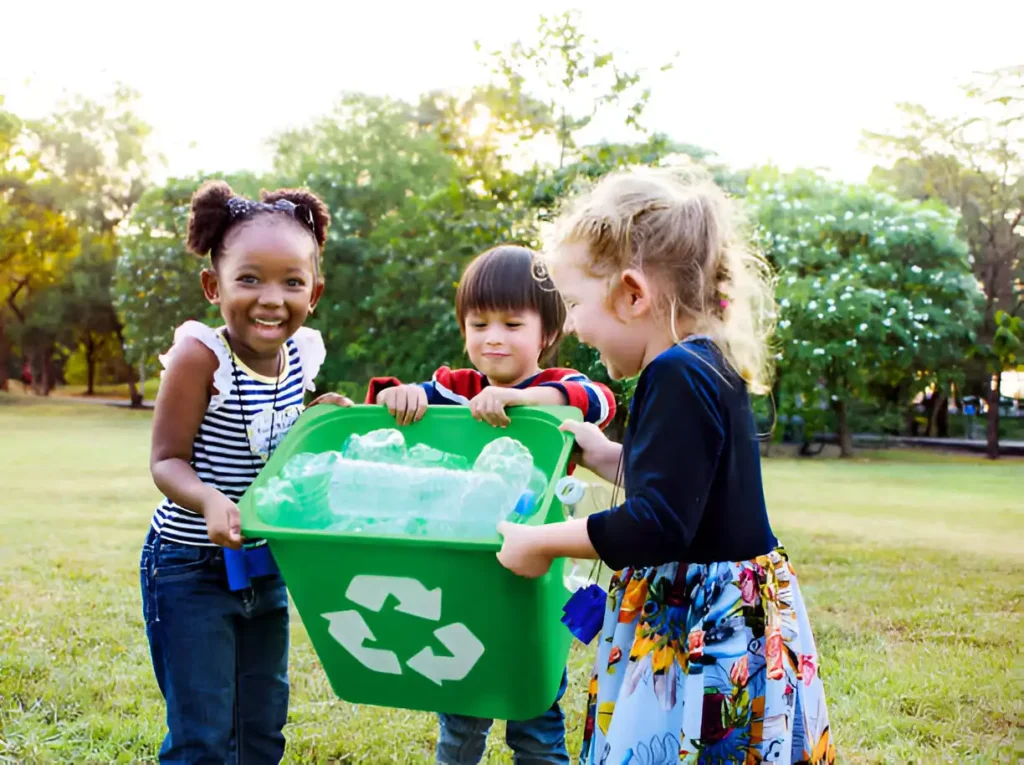
Getting your kids involved in giving back is a great way to teach them gratitude. Teach them early about the value of helping others. Studies show that many kids are already learning to give back10.
Being a good example is key. Kids naturally want to help others10. This helps them understand the importance of gratitude10.
Donate Items and Involve Kids
Have your kids sort through their toys and clothes to find things to donate. Talk about how happy their gifts will make others10. Volunteering together, like serving at a soup kitchen, teaches them about helping others10.
It’s not just about money10. Kids can help in many ways, like participating in community service. This shows them the value of giving back.
11 Making “Heart for the Homeless Bags” is a great way to help those in need11. Encourage kids to write gratitude lists to appreciate what they have11. Donating to shelters and hospitals can make them feel proud and help others.
12 Volunteering can be simple and fun for kids12. Even small actions can make a big difference12. Start with short tasks and increase them as kids grow.
10 Charities rely on donations to help those in need10. Teaching kids to be thankful can make them more aware of their blessings11. Fundraising, like selling lemonade, teaches them about hard work and generosity.
12 There are many ways families can volunteer, like helping at food pantries or animal shelters12. You can also bake for essential workers or spend time with the elderly. These activities teach kids about empathy and compassion.
“Gratitude is a significant benefit of regular volunteering, and it introduces kids to people of different ages, education, ethnicities, and backgrounds, teaching them empathy and compassion.”
Gratitude Activities and Traditions
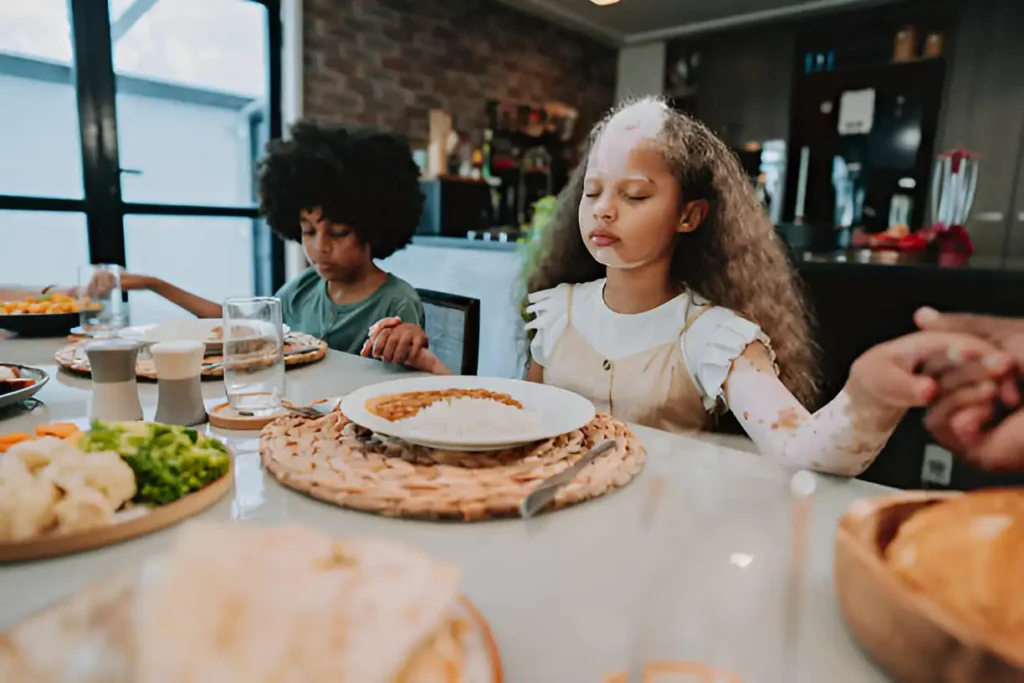
Adding gratitude activities and gratitude traditions to your family’s life can make being thankful more fun for kids. You can start a gratitude jar or gratitude tree. Here, everyone writes down what they’re grateful for. Or, you can talk about what you’re thankful for during dinner13.
Research shows that grateful youth are happier and more content than others. They have better grades, are less envious, and feel less depressed14.
- Be thankful at home by saying thanks for small kindnesses and recognizing family efforts13.
- Use a kindness jar to show selfless acts of kindness. This helps kids feel more grateful13.
- Have kids keep a gratitude journal. It helps them express thanks and develop gratitude13.
- Teach kids to write thank-you notes. It makes them more thankful and appreciative13.
- Get kids involved in giving, like packing food for others. It shows the value of gratitude13.
- Help kids see beauty around them and practice mindfulness. It deepens their gratitude13.
- Read stories that teach gratitude to kids. It’s a fun way to learn about thankfulness13.
By adding these gratitude activities and gratitude traditions to your family’s life, you create a culture of thankfulness. This can positively affect your children’s well-being and growth14.
Teaching Gratitude Through Literature
Children’s books are great for teaching kids about gratitude. Books like “All the World,” “Andy and the Lion,” and “The Thankful Book” show the value of being thankful and generous15. Reading these books and talking about them can help kids learn to appreciate more15.
Recommended Books on Gratitude
These books come from different cultures and voices. They teach kids valuable lessons about gratitude:
- “The Biggest House in the World” by Leo Lionni teaches kids to be happy with what they have15.
- “The Quiltmaker’s Gift” by Jeff Brumbeau shows the joy of saying thank you to others15.
- “The Last Stop on Market Street” by Matt de la Pena teaches kids to be thankful and give back15.
- “The Marvelous Mud House: A Story of Finding Fullness and Joy” by April Graney teaches the joy of gratitude over material things15.
- “Thank You, Omu!” by Oge Mora shows the importance of selflessness and serving others15.
- “Thank You, Mr. Falker” by Patricia Polacco shows how saying thank you can change lives15.
These books are for kids of all ages, from toddlers to pre-teens16. “The Thankful Book” by Todd Parr is for kids 2 and up16. “Otis Gives Thanks” by Loren Long is for all ages, making it great for any age group16. “Bear Says Thanks” by Karma Wilson is for kids 3 and up16, and “Penguin Problems” by Jory John is also for kids 3 and up16. “Andy and the Lion” by James Daugherty is for kids 3 and up16, and “Three Cheers for Kid McGear” by Sherri Duskey Rinker, Illustrated by AG Ford, is for kids 3 and up16. “The Quiltmaker’s Gift” by Jeff Brumbeau is for kids 4 and up16, and “Ten Thank -You Letters” by Daniel Kirk is for kids 4 and up16. “Giving Thanks: More than 100 ways to say thank you” by Ellen Surrey is for kids 6 and up16, while “Where the Mountain Meets the Moon” by Grace Lin is for older kids 8 and up16. “I Am Malala: How One Girl Stood Up for Education and Changed the World, the Young Readers Edition” by Malala Yousafzai and Patricia McCormich is for kids 11 and up16. “Malala: My Story of Standing Up for Girls’ Rights” by Malala Yousafzai and Sarah J. Robbins is for kids 7-1016, and “Malala’s Magic Pencil” by Malala Yousafzai, illustrated by Kerascoet, is for kids 4-816.
Adding these books to your child’s reading list can teach them to be thankful. Reading and discussing these stories can help kids understand the value of gratitude15.
Verbalizing Gratitude
Showing gratitude is a strong way to build appreciation and better relationships. As parents, we can teach our kids to say thank you in meaningful ways. Saying “I’m grateful for you,” “This means a lot,” and “I appreciate you” helps them see the value of kindness and support17.
It might be hard for preschoolers to say thank you, but we can guide them. We can ask them to think of three things they’re thankful for each day17. This helps them understand and express gratitude. We can also use crafts, like making a thankful turkey, to make the idea more real17.
Showing gratitude ourselves is a great way to teach kids about thankfulness17. Activities like making gratitude lists or songs can help them grasp the idea17. Doing kind acts, like helping with food or toy drives, teaches them about the link between being generous and feeling grateful17.
Writing thank you letters with adult help is a powerful way for kids to show their thanks17. It makes them think about the thoughtfulness of others and put their thanks into words. When kids help with kind acts, they see how generosity and gratitude are connected, making them understand the value of saying thank you17.
| Gratitude Phrases | Benefits |
|---|---|
| “I’m grateful for you” | Acknowledges the importance of the person |
| “This means a lot” | Expresses the significance of the gesture or action |
| “I appreciate you” | Conveys heartfelt thankfulness |
By teaching our kids to say thank you, we help them appreciate the kindness they get. This skill is important for their whole life, helping them build strong relationships and feel more thankful.
Making Gratitude a Daily Practice
Adding a daily gratitude practice to your family’s routine can make thankfulness a lifelong habit. Research shows that the practice of gratitude can lessen the impact of traumatic memories. It also boosts optimism and well-being18.
One easy way to teach gratitude is to share what you’re thankful for at dinner or before bed. This practice teaches the value of appreciation. It also helps your kids develop a positive, thankful attitude19.
Studies in cognitive neuroscience say that expressing gratitude strengthens the brain. It can improve overall well-being18. Gratitude also makes us feel more positive and less negative18.
- Start a gratitude journal where family members can record their daily appreciations.
- Create a “gratitude jar” and have everyone contribute notes of thankfulness throughout the week.
- Encourage your children to write thank-you notes to friends, teachers, or family members.
Adding gratitude to your daily routine helps your kids develop a lifelong habit of thankfulness. Studies show that gratitude boosts optimism and well-being. It also strengthens the brain and fosters kindness and respect in relationships1819.
Remember, making gratitude a regular part of your family’s life is crucial. Expressing gratitude, whether in writing or face-to-face, greatly improves well-being and happiness19.
Differentiating Needs vs Wants
In today’s world, it’s key to teach kids the difference between needs and wants. They should know that things like food, shelter, and clothes are must-haves. On the other hand, things like toys and treats are just nice-to-haves. This helps them feel thankful for what they already have20.
This lesson also helps kids see the real good things in their lives20.
Appreciating Essentials
Young kids often mix up needs and wants, seeing them as the same20. It’s important to teach them the difference. This helps them think critically and feel for others20.
When we talk about buying food at the store, it helps them see what’s really needed20. Making a list of wants and needs together helps them understand better20. Learning about money and how it’s used can also be part of this20.
By teaching kids to value the basics, we help them be more thankful. This makes them happier and more mindful of their spending21. It also helps the planet by reducing waste21.
| Needs | Wants |
|---|---|
| Food, Water, Shelter, Clothing | Toys, Treats, Luxury Items |
| School Supplies, Healthcare | Entertainment, Electronics |
| Transportation, Utilities | Vacations, Dining Out |
Teaching kids about needs and wants is vital for their financial health. It also makes them appreciate the basics more21. By doing this, we prepare them to make better choices in the future20.
Fun Gratitude Games
Adding gratitude games and activities makes saying thanks fun for kids. From a treasure hunt to a family journal, these games help kids think about what they’re thankful for. “Pick Sticks“ is a game where players pick sticks for different things they’re thankful for, like family and nature22.
- “This Just In!” lets guests share what they’re thankful for, making everyone feel connected22.
- “Gratitude Pictionary” is a twist on the classic game, where players draw what they’re thankful for22.
- The “Gratitude Tree” lets players make ornaments with notes of thanks, creating a thankful atmosphere22.
- “Gratitude Guess Who” is a guessing game where players write what they’re thankful for, then guess who wrote it22.
- “Gratitude Gab” starts conversations about what we’re thankful for, helping us connect better22.
Gratitude games can make students feel less stressed and more connected. They help students feel valued and build strong relationships in class23. When students feel appreciated, they do better in school and feel more confident23.
| Game | Description |
|---|---|
| Gratitude Grab | Players pick a category and name appreciations based on the sticks they choose24. |
| Gratitude Hunt | Participants go on a nature hike and note down things they are grateful for24. |
| Gratitude Game with Skittles | Players share appreciations out loud when prompted by the different Skittles colors24. |
| M&M Thankful Game | The colors of M&Ms represent different types of appreciations to be shared24. |
| Gratitude Bingo | Bingo icons are used as prompts for gratitude reflection24. |
These gratitude activities and games are fun and teach important life skills like managing emotions23. By using these engaging gratitude practices, you can create a positive and supportive environment for your kids23.
Teaching Gratitude
Teaching gratitude to your kids is more than just saying “thank you.” It’s about teaching them to appreciate the good things in their lives. It also helps them become kinder and more positive25.
By age 2, kids start learning about gratitude. By 3 to 5, they can show thanks on their own25. Studies show that being thankful makes people happier and less stressed25. It’s key to keep practicing gratitude with your kids25.
Teaching gratitude helps kids understand others better25. A 2019 study found that kids who are thankful are happier by age 5. Older kids who are grateful are happier and more optimistic26. Teenagers who are thankful do better in school and feel less depressed26.
Grateful teens are happier and more satisfied with life27. They do well in school and feel less envy and depression27. By following these tips, you can help your kids grow up to be grateful and compassionate.
The Thanks! A Strengths-Based Curriculum aims to teach gratitude in youth. Early studies show it helps students feel better about school and themselves27. It’s important to make gratitude lessons fit with who your kids are and their friendships27.
“Grateful adults tend to be happier and more hopeful; gratitude better predicts hope and happiness compared to concepts like forgiveness and self-control.”26
By teaching gratitude lessons and practices, you can give your kids a strong foundation. This foundation of appreciation, empathy, and resilience will help them throughout their lives.
Conclusion
Teaching gratitude for kids and raising grateful children is crucial for their well-being. By showing gratitude and doing activities that focus on it, you can help your kids appreciate life more. This will make them kind, empathetic, and positive28.
Studies show that gratitude is good for our health and happiness29. Teaching your kids to be grateful early on can lead to a happy and successful life28. It’s important to lead by example and make gratitude a daily part of your life.
As you teach your kids to be grateful, remember you’re giving them a valuable gift30. By using the strategies from this article, your kids will learn to appreciate the little things. This will make your family stronger and happier.
Source Links
- 10 Tips for Raising Grateful Kids – Child Mind Institute
- Gratitude in Education
- Gratitude: A Powerful Tool for the Classroom – Grateful.org
- Teaching an attitude of gratitude to young children
- How NOT To Teach Children Gratitude – 4 Essential Steps For Practicing Gratitude With Children – Blissful Kids
- How To Help Kids Practice Gratitude — Better Kids
- 5 ways to teach children gratitude
- Promoting Gratitude in Your Classroom
- How to Practice Gratitude
- Teaching Kids About the Importance of Giving Back | Nonprofit charities
- Teaching Children Gratitude through Giving and Volunteering
- How To Foster Gratitude Through Volunteerism
- 11 simple gratitude activities for kids as they learn to express true appreciation
- 15 Books About Gratitude for Upper Elementary Read Alouds — Tarheelstate Teacher
- Teaching Gratitude Through Literature – SLO Classical Academy
- Tips For Teaching Gratitude – Connection Point Early Learning Center
- How to Make Gratitude a Daily Habit
- How to Practice Gratitude – Grateful.org
- “But I WAAAANT It!” How to Teach Kids the Difference Between Wants & Needs
- Wants vs Needs: How to Tell Them Apart and Why It’s Important to – The Simplicity Habit
- 5 Great Gratitude Games!
- 36 Gratitude Activities for Kids That Are Actually Meaningful
- The Playlist: Activities for kids that are all about teaching gratitude
- Fostering gratitude in toddlers and preschoolers
- How to Teach to Experience and Express True Gratitude
- How to Teach Gratitude to Tweens and Teens – Grateful.org
- Teaching Gratitude – Babywise Mom
- Through the Lens of Gratitude
- Gratitude in Education: A Radical View – Grateful.org

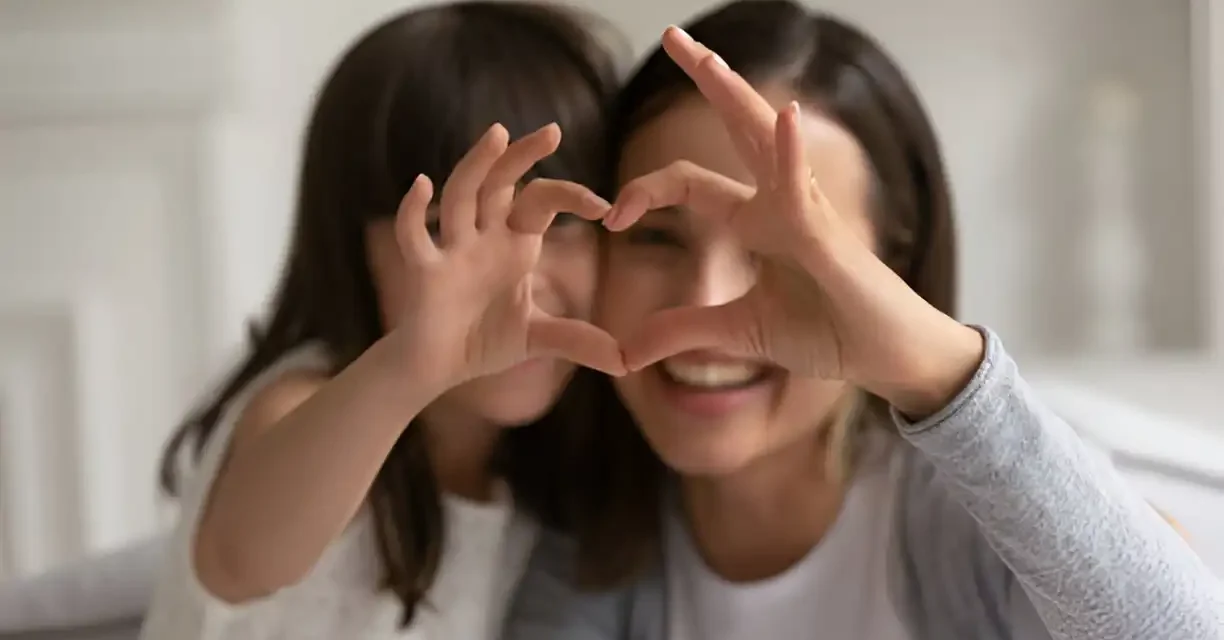

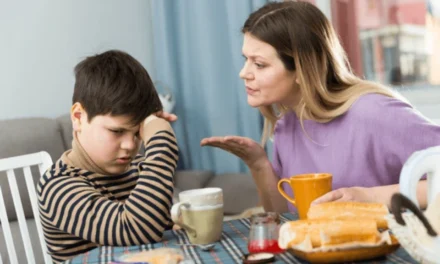


Trackbacks/Pingbacks